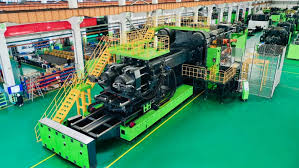Molding machines play a pivotal role in various manufacturing processes, the best injection molding machine allowing industries to produce a wide range of products with precision and efficiency. From plastic toys to complex automotive parts, these machines shape raw materials into usable items through diverse molding techniques. This article provides a comprehensive overview of molding machines, their types, applications, and advancements in technology.
What is a Molding Machine?
A molding machine is a piece of equipment designed to shape materials, primarily metals and plastics, into specific forms using molds. The process involves melting or softening the material and then injecting or compressing it into a mold cavity. Once the material cools and solidifies, the mold is removed, revealing the finished product.
Types of Molding Machines
- Injection Molding Machines
- Overview: Injection molding is one of the most widely used processes, particularly for plastics. In this method, plastic pellets are melted and injected into a mold under high pressure.
- Applications: Commonly used for producing plastic components like containers, automotive parts, and consumer goods.
- Advantages: High production rates, precision, and the ability to produce complex shapes.
- Blow Molding Machines
- Overview: Blow molding involves forming hollow plastic parts by inflating a heated plastic tube (parison) inside a mold.
- Applications: Used to manufacture bottles, containers, and other hollow objects.
- Advantages: Efficient for producing large quantities of hollow parts with uniform wall thickness.
- Compression Molding Machines
- Overview: Compression molding involves placing a pre-measured amount of material into an open mold cavity and then closing the mold to apply heat and pressure.
- Applications: Suitable for rubber, thermosetting plastics, and composite materials. Used for parts like automotive seals and electrical components.
- Advantages: Good for high-strength parts and materials with a high viscosity.
- Rotational Molding Machines
- Overview: Rotational molding involves heating a material in a mold that is rotated along two axes, allowing the material to coat the interior surfaces of the mold.
- Applications: Ideal for producing large, hollow items such as tanks, playground equipment, and kayaks.
- Advantages: Produces durable, seamless products with good uniformity.
- Thermoforming Machines
- Overview: Thermoforming involves heating a plastic sheet until it becomes pliable and then forming it over a mold using vacuum or pressure.
- Applications: Commonly used for packaging materials, trays, and medical devices.
- Advantages: Versatile and cost-effective for short production runs.
Key Components of Molding Machines
- Clamping Unit: Holds the mold in place and applies pressure during the molding process.
- Injection Unit: Melts and injects the material into the mold.
- Mold: The tool that defines the shape of the final product. It consists of two halves that come together to form the cavity.
- Control System: Manages the various parameters of the molding process, including temperature, pressure, and timing.
Applications Across Industries
Molding machines are utilized in numerous industries, including:
- Automotive: For producing components such as dashboards, bumpers, and interior parts.
- Consumer Goods: For creating everyday items like plastic containers, toys, and household appliances.
- Medical Devices: For manufacturing parts like syringes, surgical instruments, and diagnostic equipment.
- Construction: For producing items such as pipes, fittings, and insulation materials.
Technological Advancements
Recent advancements in molding technology focus on improving efficiency, precision, and sustainability. Innovations include:
- Automation: The integration of robotics and automated systems to enhance production speed and reduce labor costs.
- Smart Molding: The use of sensors and data analytics to monitor and optimize the molding process in real-time.
- Material Science: Development of new materials with enhanced properties, such as improved strength, flexibility, and environmental resistance.
Conclusion
Molding machines are indispensable tools in modern manufacturing, enabling the production of a diverse array of products with precision and efficiency. By understanding the different types of molding machines, their applications, and the latest technological advancements, industries can better leverage these machines to meet their production needs and drive innovation. As technology continues to evolve, molding machines will undoubtedly play an even more significant role in shaping the future of manufacturing.

